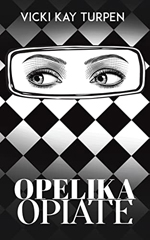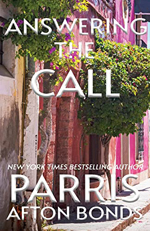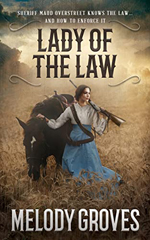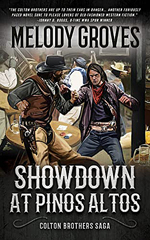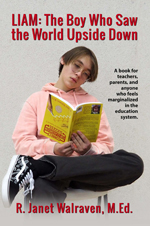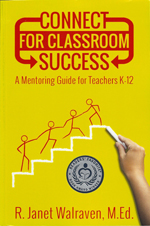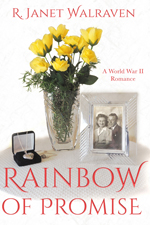Léonie Rosenstiel is an award-winning author whose nonfiction can be found in various anthologies and other publications such as Los Angeles Times, Albuquerque Journal, Chicago Tribune, and Boston Globe. Her longer work includes biographies, reference books, and her personal journey of Protecting Mama: Surviving the Legal Guardianship Swamp (Calumet Editions, November 2021). Léonie’s newest release is Legal Protection: Affordable Options for Individuals, Families, and Small Businesses (January 2024), with a foreward written by Jack Canfield. You’ll find Léonie’s books on her Amazon author page. For more about her work, read her 2022 SWW interview.
 What makes Legal Protection different from the other legal self-help books on the market?
What makes Legal Protection different from the other legal self-help books on the market?
Legal Protection shows people how to find the help they need, and have the peace of mind of knowing, in advance, that they have help available if (when?) they ever need it. It’s not an attempt to sell anyone a particular service or legal form. What I do is to show readers exactly what the best-known services offer (or don’t offer) and who can benefit the most from using them.
Who did you write the book for, and what did you bring to it that other writers couldn’t have?
I wrote it for those who seem to suffer most acutely in our legal system: middle class people. They’re not poor enough to get help from free law clinics but they’re not rich enough to have a stable of lawyers on retainer, either. I’ve watched a number of these sufferers spend all their disposable income—or even be forced to declare bankruptcy—to pay unexpected legal bills. Attorney billings can be just as draining of a bank account as devastating medical bills.
What do I bring to this subject that others don’t? Several generations of my family struggled through court cases and I grew up hearing their tales of woe. I was even involved, in peripheral ways, in some of those cases. When I started doing research on my family history, I discovered even more difficult and exhausting legal cases I’d never heard about before.
I’ve had more than a dozen attorneys of my own, over the decades. A couple of times, I felt obliged to put an attorney on retainer, so I know, first-hand, what that does to a bank account. I’m not an attorney. However, I’ve come to consider myself an expert consumer of legal services.
You must have discovered hundreds (if not thousands) of interesting facts while doing research for this book. How did you sift through it all and decide the most useful information to include in the book?
I started with the five top-rated legal services of 2023, as evaluated by Forbes Magazine. Then I added a few others that people mentioned to me, and that I knew had been around for decades. Then I decided to leave out one (not among the top services) that is only available to federal employees.
In reviewing the services, I took a critical attitude. Did the firm have a consistent philosophy? If not, what changed, over the years? Some had been merged into big conglomerates. Others had critics not allowed to post on their corporate websites. Those critics had started their own sites to complain—and these included both clients and attorneys!
What would you think of a legal service that claims to let people file their own legal forms, but in the fine print it says it has no idea whether the forms are valid, and you must have the help of an attorney before you file them? I made some discoveries that I consider scandalous, but you’ll have to read the book to know what they are. I hope I’ve managed to let the facts speak for themselves.
What was the most difficult challenge of putting this work together?
There were times when I wanted to warn people not to use a particular service, even though it was one of the top five, according to Forbes. Again, I did the research, asked some probing questions, to try to make readers think about what the information actually would mean to them as consumers of legal services, and then allowed the facts to speak for themselves.
Tell us about the journey from inspiration to completed book.
A little over a year ago, I was at a writers retreat with Jack Canfield, author of The Success Principles and co-author of the Chicken Soup for the Soul® series. He’d looked at and endorsed a previous book of mine, Protecting Mama. The manuscript I showed him at that retreat was negative about adult guardianship. He understood why, but he wanted me to be offering people some hope also.
I went home, agonizing over how I could possibly do this when the situation seemed so bleak. Finally, I decided to do some deep research, starting from the beginning of the problem, which always seemed to be misunderstandings about the law or a lack of access to the right attorney at the right time. How could ordinary people have available legal help and not go bankrupt? That’s what made me search for solutions. This isn’t a long book, and once I got started, I found myself in “the zone” because my zeal to get the word out seemed to give me extra energy.
What did you learn in writing/publishing the book that you can apply to future projects?
If you feel absolutely stumped, what you need is probably hiding in plain sight. As with many mysteries, you’ve already seen the clue that solves the case. However, you didn’t realize, when you encountered it, how important it was and how it was connected to the rest of the puzzle. Look again at the problem as if you’re encountering it anew. You’ll be amazed at the new connections you can find, and the new conclusions you can draw!
 Of all the nonfiction books you’ve written, which one was the most challenging and which was the easiest or most enjoyable to write?
Of all the nonfiction books you’ve written, which one was the most challenging and which was the easiest or most enjoyable to write?
The most challenging book? It’s a photo finish between Nadia Boulanger and Protecting Mama. I was so comparatively young when I wrote Nadia Boulanger! I felt I had a great deal of responsibility on my shoulders. I was writing about a cultural icon and needed to find a place of neutrality to tell a balanced story. To get the job done, I conducted over 300 interviews and traveled for several years.
Protecting Mama was equally challenging. The events I described were emotionally fraught for both my mother and me. I was so close to the subject, emotionally, that I worked very hard to take several steps back so I could see the patterns and not get stuck in the smaller events.
Have you ever wanted to write fiction?
I’ve written short fiction, and even won a few awards for it. One of my attorneys inspired me to start a sci fi novel some years ago. It’s tentatively titled Tensor Calculus. I’ve only written a few chapters and I’m still not sure whether I’m going to finish it.
What can fiction writers learn from nonfiction writers?
This would only apply to fiction writers in known genres, or “regular” literary fiction, and not to those who want to write experimental works: Make things real for your readers. They should be able to smell, feel, taste and/or hear what you’re showing them. If you met these characters at a party, would they be good companions? Do you love them or hate them? People are almost never monolithic. Assuming that this is true, do your bad characters have some good qualities and your good characters have some bad qualities?
What has writing taught you about yourself?
If I answered this question, the response would be so long that I’d be writing another book.
What writing projects are you working on now?
I have five nonfiction books in various stages of completion right now. They have no titles yet. One relates to AI. Another is a book about how families might be able to avoid a run-in with the court system intent on taking over their beloved elders. Two manuscripts describe various events (in prior generations) that helped to lead my mother, eventually, toward a devastating commercial guardianship.
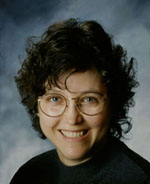 KL Wagoner (writing as Cate Macabe) is the author of This New Mountain: a memoir of AJ Jackson, private investigator, repossessor, and grandmother. Kat has a speculative fiction blog at klwagoner.com and writes about memoir at ThisNewMountain.com.
KL Wagoner (writing as Cate Macabe) is the author of This New Mountain: a memoir of AJ Jackson, private investigator, repossessor, and grandmother. Kat has a speculative fiction blog at klwagoner.com and writes about memoir at ThisNewMountain.com.


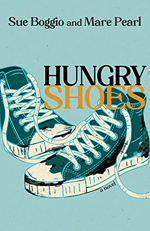

 Su Lierz writes dark fiction, short story fiction, and personal essays. Her short story “Twelve Days in April,” written under the pen name Laney Payne, appeared in the 2018 SouthWest Writers Sage Anthology. Su was a finalist in the 2017 and 2018 Albuquerque Museum Authors Festival Writing Contest. She lives in Corrales, New Mexico, with her husband Dennis.
Su Lierz writes dark fiction, short story fiction, and personal essays. Her short story “Twelve Days in April,” written under the pen name Laney Payne, appeared in the 2018 SouthWest Writers Sage Anthology. Su was a finalist in the 2017 and 2018 Albuquerque Museum Authors Festival Writing Contest. She lives in Corrales, New Mexico, with her husband Dennis.

